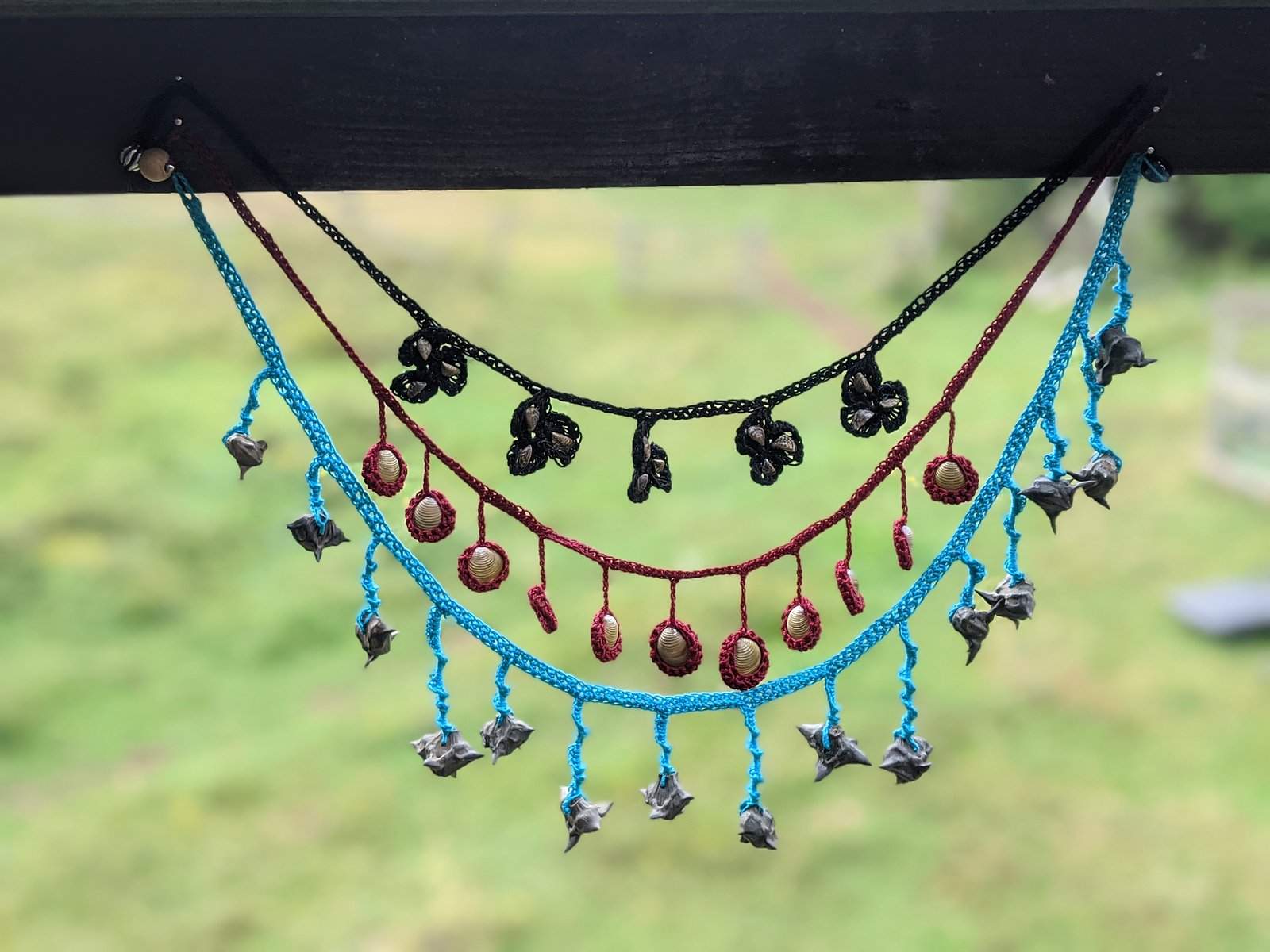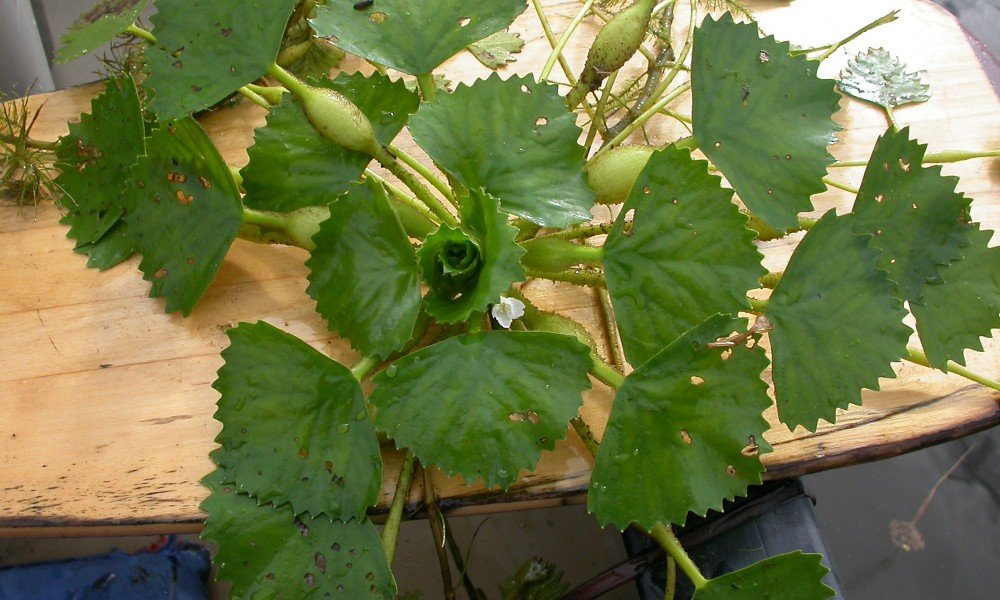Where do water chestnuts come from?
The water chestnut is an aquatic invasive plant that is native to Eurasia. This plant is often found growing in shallow, nutrient-rich lakes and slow-flowing rivers. The Eurasian Water Chestnut, Trapa natans, has been established in the United States for more than one hundred years. The water chestnut was first introduced to the Northeast in the late 1800s and was heavily established in the Hudson River by the early 1900s. Its persistent seeds and extensive growth patterns make this plant an effective aquatic invader.
The floating leaves of this water chestnut are feathery and whorled around a spongy stem, triangular in shape, and feature prominent toothed edges. The plant produces hard, nut-like seeds, with sharp spines . The plant’s spongy stems are cord-like and buoyant and will often be found growing at lengths of six to eight feet but can reach lengths of up to sixteen feet. Each stem is anchored in the bed of the waterbody by numerous branched roots. It is an annual plant that dies at the end of each growing season. The seeds germinate in the spring, producing 10-15 rosettes and each rosette can produce up to 20 seeds. The water chestnut begins to produce fruits in July. The fruits ripen in about a month and each contain a single seed. These 1- to 1.5-inch-wide fruits grow under water and have four very sharp spines. The seeds generally fall directly beneath the parent plant, overwintering at the lake or river bottom. Healthy seeds can remain viable for up to 12 years, making the long-term management of this invasive plant difficult. Some of these seeds will be transported by currents or wildlife to areas downstream.
Unfortunately, water chestnuts are common in the southern stretches of Lake Champlain, as well as in more than 40 counties in New York State. This plant can cause multiple problems within an aquatic ecosystem. The dense, floating foliage of the water chestnut can outcompete native aquatic plants for sunlight and space. In areas where there is a high density of water chestnuts, a varied flora bed can quickly turn into a monoculture of water chestnuts within a few years. These dense beds of water chestnuts can lead to lower levels of dissolved oxygen, which is not suitable for some fish or invertebrates. Most native species of fish or waterfowl receive no nutritional or habitat benefit from this plant. There are also numerous economic and social ramifications that can occur as a result of its spread. The dense beds of leaves produced by this aquatic invader make it difficult for commercial and recreational navigation through infested waters. The spiked seed pod produced by the water chestnut can puncture swimmers’ feet and make visiting local beaches and shorelines undesirable. These beds are also poor habitats for highly desired sport fish and provide little food for waterfowl, causing cascading effects in both fishing and hunting economies.


If you frequent the Adirondacks, you are likely familiar with aquatic invasive species. Similar to many other aquatic invaders, water chestnuts are found in many other Northeastern states such as Pennsylvania, Massachusetts, and Vermont. There are a few different theories on why it has achieved success with spreading at such a high rate. However, the best evidence supports the water chestnut hitching a ride from other heavily infested areas on human materials such as motorboats, kayaks, or transport trailers. Managing the water chestnut once it has invaded a waterbody is a challenging, time-consuming, and expensive effort. It is estimated that the management of water chestnuts in Lake Champlain alone has cost New York and Vermont nearly $10,000,000. The manual removal of water chestnut can be a useful tool for reducing small populations in areas where the plant was recently introduced. However, mechanical harvesting is the most effective measure for mitigating large populations. Ideally, mechanical harvesting takes place before the fruit has ripened and dropped to the bottom of the waterbody. Herbicides and biological controls are also tactics that biologists and lake managers are implementing to reduce the spread of water chestnuts.
You can help prevent the spread of aquatic invasive species by inspecting your watercraft before and after use. Join the Adirondack Watershed Institute for one of our educational programs or events to learn more about how you can help protect Adirondack lakes.
Are you looking to give back to Adirondack waterways? We’re looking for volunteers to conduct routine water quality monitoring on Adirondack lakes.

